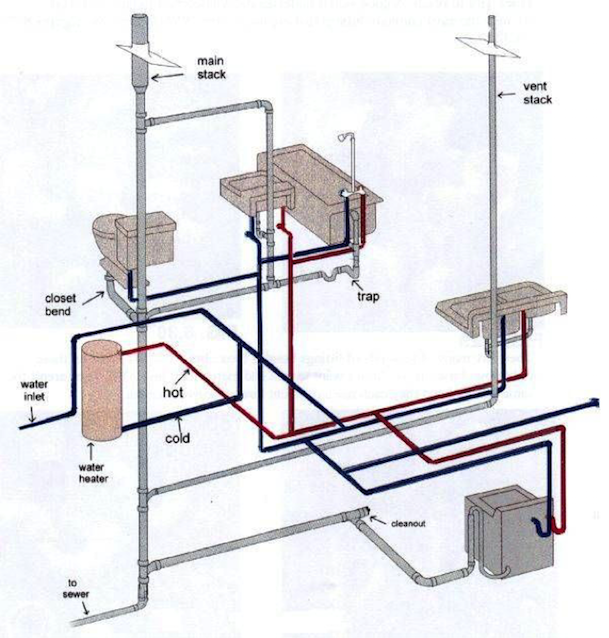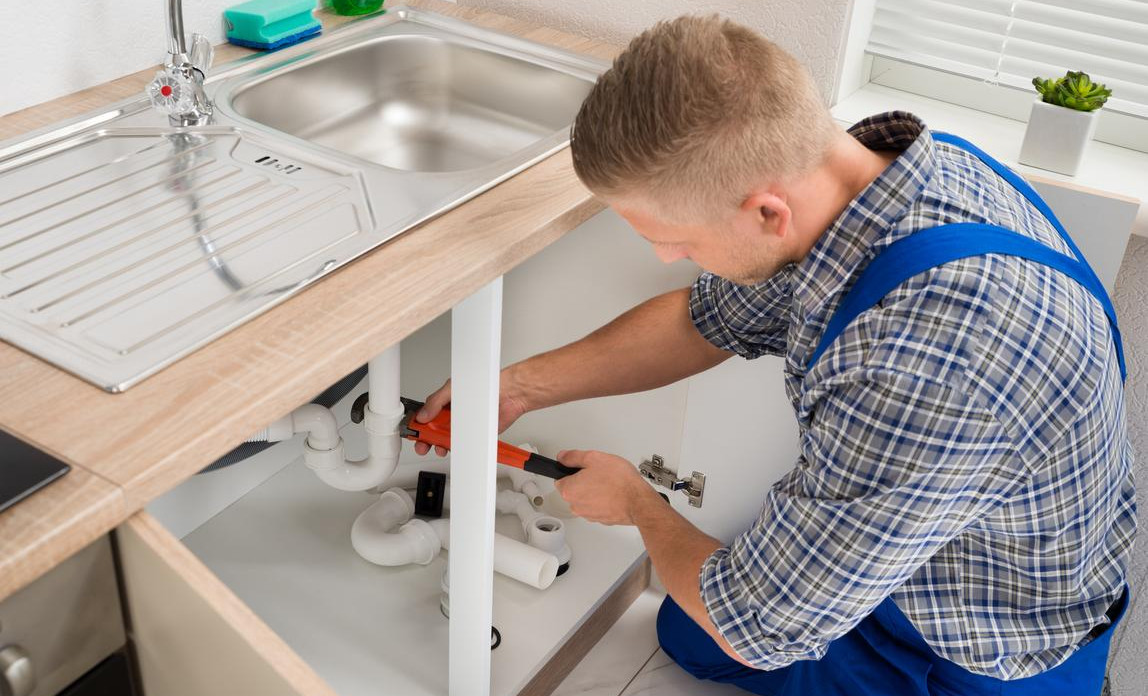This article following next about The Inner Workings of Your Home's Plumbing is extremely stimulating. Check it out for your own benefit and see what you think of it.

Understanding just how your home's pipes system works is important for every home owner. From supplying clean water for drinking, food preparation, and showering to safely getting rid of wastewater, a properly maintained plumbing system is critical for your family members's health and wellness and comfort. In this extensive guide, we'll discover the elaborate network that makes up your home's pipes and offer tips on maintenance, upgrades, and handling common concerns.
Intro
Your home's plumbing system is greater than just a network of pipelines; it's a complicated system that ensures you have accessibility to tidy water and efficient wastewater elimination. Understanding its components and exactly how they work together can aid you prevent expensive repairs and make certain whatever runs efficiently.
Fundamental Components of a Pipes System
Pipes and Tubing
At the heart of your plumbing system are the pipelines and tubing that bring water throughout your home. These can be made of numerous materials such as copper, PVC, or PEX, each with its advantages in regards to resilience and cost-effectiveness.
Components: Sinks, Toilets, Showers, etc.
Components like sinks, commodes, showers, and tubs are where water is made use of in your home. Recognizing how these components attach to the plumbing system aids in identifying troubles and planning upgrades.
Shutoffs and Shut-off Points
Shutoffs control the flow of water in your plumbing system. Shut-off shutoffs are essential throughout emergency situations or when you need to make fixings, allowing you to separate parts of the system without interfering with water flow to the entire residence.
Supply Of Water System
Key Water Line
The major water line connects your home to the metropolitan water or an exclusive well. It's where water enters your home and is dispersed to numerous fixtures.
Water Meter and Pressure Regulatory Authority
The water meter actions your water usage, while a pressure regulatory authority makes certain that water streams at a secure pressure throughout your home's plumbing system, stopping damages to pipes and components.
Cold Water vs. Warm water Lines
Understanding the distinction between cold water lines, which provide water straight from the primary, and hot water lines, which bring warmed water from the hot water heater, aids in troubleshooting and planning for upgrades.
Drain System
Drain Pipes Piping and Traps
Drain pipelines carry wastewater away from sinks, showers, and toilets to the sewer or septic tank. Traps protect against sewage system gases from entering your home and additionally catch particles that might trigger clogs.
Ventilation Pipelines
Ventilation pipes permit air right into the drain system, preventing suction that could reduce water drainage and create traps to empty. Proper air flow is crucial for preserving the integrity of your plumbing system.
Relevance of Appropriate Drainage
Ensuring appropriate water drainage stops backups and water damage. Frequently cleaning drains and maintaining traps can prevent pricey fixings and prolong the life of your pipes system.
Water Heater
Types of Water Heaters
Hot water heater can be tankless or typical tank-style. Tankless heating units heat water as needed, while containers save warmed water for instant use.
Upgrading Your Pipes System
Factors for Updating
Updating to water-efficient components or replacing old pipes can improve water top quality, reduce water bills, and enhance the value of your home.
Modern Plumbing Technologies and Their Benefits
Explore modern technologies like wise leak detectors, water-saving commodes, and energy-efficient hot water heater that can conserve money and decrease ecological impact.
Cost Factors To Consider and ROI
Compute the upfront costs versus long-lasting cost savings when thinking about plumbing upgrades. Many upgrades pay for themselves with lowered energy costs and fewer repairs.
Exactly How Water Heaters Connect to the Plumbing System
Recognizing exactly how water heaters link to both the cold water supply and warm water distribution lines helps in identifying concerns like insufficient warm water or leakages.
Maintenance Tips for Water Heaters
Regularly flushing your hot water heater to eliminate sediment, checking the temperature level setups, and checking for leaks can expand its lifespan and boost power performance.
Common Pipes Problems
Leakages and Their Causes
Leaks can take place because of aging pipelines, loose installations, or high water pressure. Attending to leakages immediately protects against water damage and mold and mildew growth.
Obstructions and Blockages
Obstructions in drains and bathrooms are often brought on by flushing non-flushable things or a buildup of grease and hair. Making use of drain displays and being mindful of what decreases your drains pipes can prevent blockages.
Indicators of Plumbing Troubles to Watch For
Low water stress, slow drains pipes, foul odors, or abnormally high water costs are signs of prospective pipes problems that ought to be resolved promptly.
Plumbing Upkeep Tips
Normal Evaluations and Checks
Arrange yearly plumbing evaluations to capture issues early. Search for indications of leakages, rust, or mineral accumulation in taps and showerheads.
Do It Yourself Upkeep Tasks
Straightforward jobs like cleansing faucet aerators, checking for toilet leaks making use of color tablet computers, or insulating revealed pipelines in cool climates can prevent significant pipes concerns.
When to Call a Specialist Plumbing Professional
Know when a plumbing issue requires professional know-how. Trying complex repair work without proper understanding can cause even more damages and greater repair service prices.
Tips for Lowering Water Use
Straightforward habits like fixing leaks quickly, taking much shorter showers, and running complete loads of laundry and dishes can preserve water and reduced your utility bills.
Eco-Friendly Plumbing Options
Take into consideration lasting pipes products like bamboo for flooring, which is durable and green, or recycled glass for countertops.
Emergency Readiness
Actions to Take During a Pipes Emergency situation
Know where your shut-off shutoffs are located and how to shut off the water supply in case of a burst pipe or major leak.
Relevance of Having Emergency Situation Calls Helpful
Maintain get in touch with information for local plumbings or emergency situation solutions readily offered for fast reaction throughout a pipes crisis.
Ecological Effect and Conservation
Water-Saving Components and Home Appliances
Installing low-flow taps, showerheads, and bathrooms can significantly lower water usage without sacrificing efficiency.
DIY Emergency Fixes (When Suitable).
Short-term solutions like utilizing duct tape to spot a dripping pipe or positioning a container under a trickling faucet can minimize damages up until a professional plumbing technician shows up.
Conclusion.
Comprehending the anatomy of your home's plumbing system empowers you to preserve it effectively, conserving money and time on repair work. By adhering to regular upkeep regimens and staying educated about modern-day plumbing innovations, you can guarantee your plumbing system runs efficiently for many years to come.
Understanding Your Home Plumbing System: A Comprehensive Guide
Plumbing System: The Lifeline of Your Home
At its core, the plumbing system is designed to perform two primary functions: bring fresh water into your home and remove wastewater. The system is a network of pipes, fixtures, and other components that transport water and sewage. Residential plumbing systems include potable water supply lines, drain-waste-vent (DWV) systems, and various plumbing fixtures that make water use in daily tasks possible.
Key Components:
Water Supply: This part of your plumbing system brings municipal water into your home, passing through the main water supply line. It s responsible for supplying all water needs, from drinking to bathing.
Drainage System: It carries waste and water away from your home to the sewer or septic system. This system includes all the piping within your home that leads to external sewage or septic systems.
Vent System: An essential yet often overlooked component, the vent system allows sewer gases to escape and lets air into the drainpipes, ensuring water and waste move correctly through the system.
Fixture: More Than Just Taps and Toilets
Plumbing fixtures are the most interactive parts of the plumbing system, including faucets, showers, toilets, and sinks. Each fixture is connected to the plumbing system and plays a role in either the delivery of freshwater or the disposal of waste and wastewater.
Types of Fixtures:
Faucets and Sinks: Used for washing hands, dishes, and other daily water needs. Toilets: Dispose of human waste through the sewage system. Bathtubs and Showers: Provide bathing facilities, requiring both hot and cold water supply. Water Supply: The Source of Life
The water supply system is a critical component, ensuring that potable water is available throughout your home for various uses, including drinking, cooking, and cleaning. This system consists of pipes that distribute water to different parts of the house, controlled by valves to regulate the water flow.
Types of Plumbing: Materials and Methods
Various types of plumbing systems and materials are used in residential settings, each with its advantages and applications. From copper and PVC pipes for water supply to cast iron and ABS for drainage, the choice of materials can impact the longevity and efficiency of your plumbing system.
https://intownplumbingtx.com/articles/home-plumbing-system-guide/

Do you like more info about Anatomy of a House: Understanding the Components? Place a review directly below. We will be pleased to listen to your views about this entry. We are looking forward that you come back again soon. Sharing is nice. You never know, you will be helping someone out. I treasure your readership.
Book Inspection